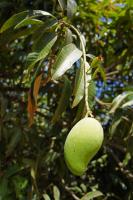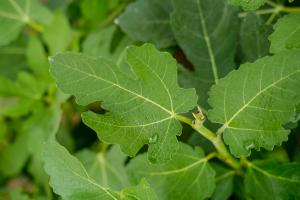Introduction
Planting bare root trees is a cost-effective way to establish a new garden or orchard. The best time to plant bare root trees is during their dormant season, which is typically from late fall to early spring. However, if for some reason you can't plant your bare root trees immediately after purchase, you may be wondering how long you can wait before planting them. In this article, we'll explore the factors that affect your planting timeline and offer some useful tips on how to keep your bare root trees healthy and happy until you're ready to plant them.
The Factors that Affect Your Planting Timeline
If you've missed the ideal planting window, you may be able to wait a little longer before planting your bare root trees. However, there are several factors to consider when determining how long you can delay planting, including:
The type of bare root tree
The condition of the roots
The weather conditions
The storage conditions
Let's take a closer look at each factor:
The Type of Bare Root Tree
Some bare root trees are hardier than others and can tolerate longer periods of storage time. For example, fruit trees such as apples, pears, and cherries can typically wait a little longer than nut trees such as almonds, pecans, and walnuts. If you're not sure about the specific requirements for your tree, consult with a garden expert or do some research on the best practices for planting and storage.
The Condition of the Roots
The condition of the roots is one of the most important factors to consider when determining how long you can wait to plant your bare root trees. If the roots are dried out or damaged, they may not survive if left sitting for too long. To keep the roots healthy, make sure they stay moist throughout storage and transport. If you can't plant the tree right away, consider "heeling in" the tree by temporarily burying the roots in a shallow trench until you're ready to plant.
The Weather Conditions
The weather conditions in your area can also affect your planting timeline. If the ground is frozen or waterlogged, you may need to wait until the weather improves before you can plant your bare root trees. Similarly, extreme heat or cold can stress the tree and make it more susceptible to damage or disease. Make sure to monitor the weather forecast and plan your planting accordingly.
The Storage Conditions
The storage conditions for your bare root trees can also impact how long you can wait before planting. Ideally, you want to store the trees in a cool, dark, and humid environment to keep them healthy and dormant. Avoid storing the trees too close together or in a location that is too warm or dry. If you're purchasing from a nursery, ask them about their storage procedures and make sure the trees are healthy and well-cared-for before purchasing.
Tips for Keeping Your Bare Root Trees Healthy
If you need to store your bare root trees for an extended period, here are some helpful tips to keep them healthy and happy:
Keep the roots moist by wrapping them in damp burlap or storing them in a bucket of water.
Avoid exposing the tree to extreme temperatures or direct sunlight.
Don't let the roots dry out or freeze.
Inspect the tree regularly for signs of damage or disease.
Consider planting the tree in a temporary location or "heeling in" the tree until you're ready to plant.
Conclusion
In general, it's best to plant your bare root trees as soon as possible after purchase to give them the best chance of survival. However, if you need to delay planting for some reason, you can generally wait a few weeks to a few months as long as you take steps to keep the trees healthy and dormant. By understanding the factors that affect planting time and following some simple storage tips, you can ensure your bare root trees thrive and flourish for years to come.

 how many times do yo...
how many times do yo... how many planted tre...
how many planted tre... how many pine trees ...
how many pine trees ... how many pecan trees...
how many pecan trees... how many plants comp...
how many plants comp... how many plants can ...
how many plants can ... how many plants and ...
how many plants and ... how many pepper plan...
how many pepper plan...






























